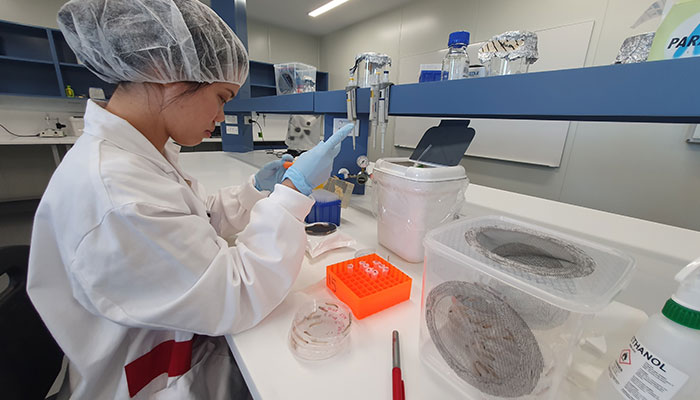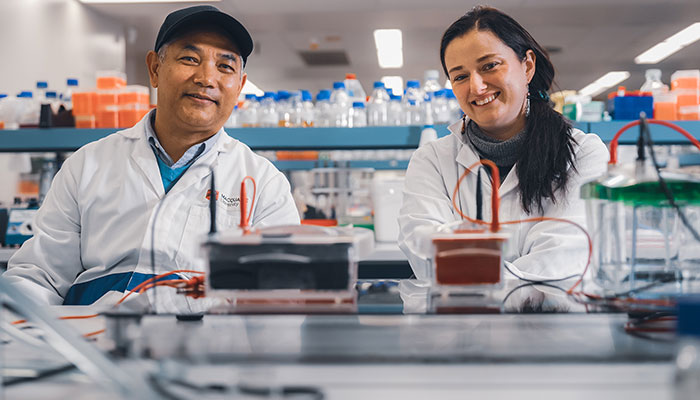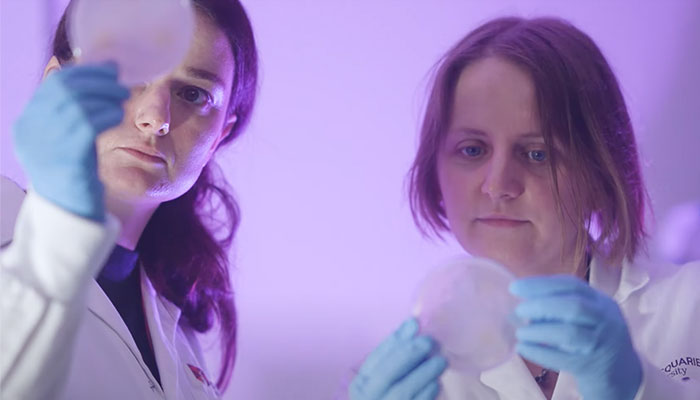The deadly hospital pathogen Acinetobacter baumannii can live for a year on a hospital wall without food and water. Then, when it infects a vulnerable patient, it resists antibiotics as well as the body's built-in infection-fighting response. The World Health Organization (WHO) recognises it as one of the three top pathogens in critical need of new antibiotic therapies.

Now, an international team, led by Macquarie University researchers Dr. Ram Maharjan and Associate Professor Amy Cain, have discovered how the superbug can survive harsh environments and then rebound, causing deadly infections. They have found a single protein that acts as a master regulator. When the protein is damaged, the bug loses its superpowers allowing it to be controlled, in a lab setting. The research is published this month in Nucleic Acids Research.
“We hope that our paper will encourage researchers worldwide to refocus on developing drugs to fight this superbug, which is spreading through the world’s hospitals, and killing already vulnerable people in intensive care units and other high-risk areas,” says Associate Professor Cain, the senior author on the paper.
There are six superbugs that scare global health officials. E. coli, Klebsiella pneumoniae and other gram-negative bacteria have common pathways that give them antibiotic resistance. A. baumannii is different. It’s particularly tough, and it’s one of the most resistant pathogens we encounter. Strangely, we don’t know much about how it infects us.
Breakthrough in a research challenge
“In the lab we can see this pathogen is very tough. Other researchers have shown that you can desiccate the bug for a year and when they added water, it was still able to infect mice,” says Associate Professor Cain.

Discovery: Inside the Galleria Facility at Macquarie University’s Applied Biosciences Laboratories where Dr. Ram Maharjan and Associate Professor Amy Cain did their work on the deadly superbug.
“The problem had been that A. baumannii is relatively new on the scene, emerging as a problem in hospitals in the 1980s. And it’s hard to genetically manipulate with the existing molecular biology toolkit. It usually only infects sick people, but it is very resistant to antibiotics making it incredibly hard to treat and difficult to safely research. So, we don’t know much about it. We don’t know where it came from, nor how it became so resistant and resilient. Now, thanks to this paper, we know how it deals with stress.”
Amy and her colleagues realised about five years ago that they could make a difference by trying to understand the underlying biology of A. baumannii. That led to a major investment by Macquarie University in the research, in biocontainment laboratories for staff safety, and in an ethical animal model using moth caterpillars. The research effort has been strongly supported by the Australian Council and the National Health and Medical Research Council.
We hope that our paper will encourage researchers worldwide to refocus on developing drugs to fight this superbug, which is spreading through the world’s hospitals.
During infection our cells fight back by either flooding or starving bacteria of essential metals such as copper and zinc. A. baumannii has strong drug pumps that push antibiotics, metals and other threats out of the cell.
“By studying how this bug deals with infection stresses, we’ve found an important uncharacterised regulatory protein (DksA). When we disrupt this protein, it leads to changes in about 20 per cent of the bug’s genome and breaks its pumping system,” says Dr Ram Maharjan, a Macquarie University researcher and first author on the paper.

Breakthrough: Dr. Ram Maharjan, pictured left, and Associate Professor Amy Cain, pictured right, led an international team which has discovered how the deadly superbug A. baumannii survives.
Not only does this protein control stress response, but it also controls virulence. A. baumannii usually spreads in blood but our disruption also caused it to be completely undetected in the blood of both Galleria mellonella and mice. It also becomes super sticky and harmlessly sticks to organs.
This has been a massive global research effort over the past five years, working with colleagues at Flinders University, Monash University, University of Cambridge, University of Wurzburg.
The new paper builds on a discovery earlier this year also led by Macquarie researchers that showed that K. pneumoniae and A. baumannii work together to avoid antibiotics.
Associate Professor Amy Cain is an Australian Research Council Future Fellow and researches antimicrobial resistance in the School of Natural Sciences.



